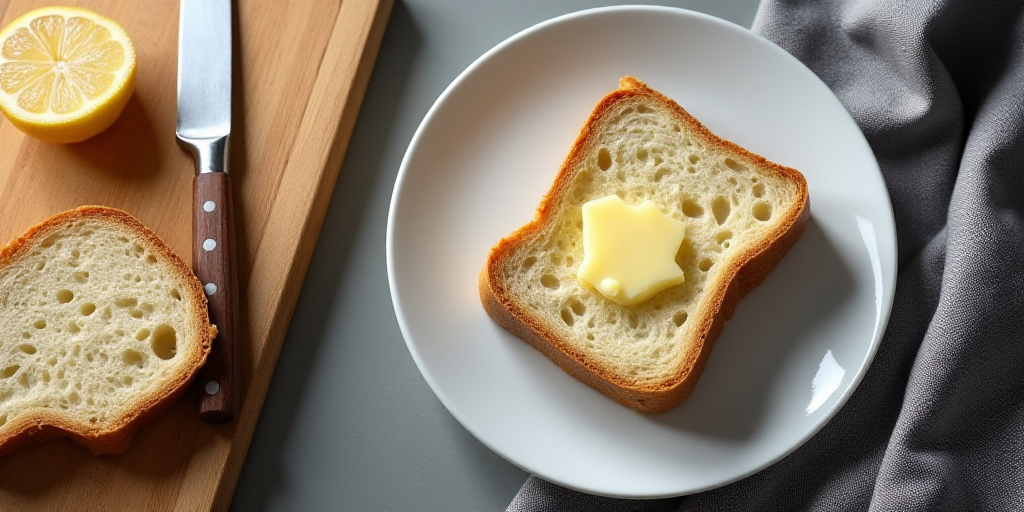Mexican Margarine Market Growth and Consumption
According to projections by market data firm Statista, the Mexican margarine market is expected to grow from $434 million in 2025 to approximately $529 million by 2030, with a compound annual growth rate (CAGR) of 4.02%.
In terms of volume, the market is projected to reach 99.46 million kilograms by 2030, with a volume growth of 0.2% in 2026 and an average consumption per person of 0.75 kilograms in 2025 (2 grams per person daily).
Margarine’s High Penetration in Mexican Households
Despite stable and moderate growth in the country, margarine has achieved an 80% penetration rate in Mexican households, where it is commonly used for food preparation, baking, and as a spread.
Its consumption is driven by its profile of unsaturated fatty acids derived from its vegetable origin, aligning with the World Health Organization’s (WHO) recommendations that 30% of daily caloric intake come from fats, with 20% being unsaturated.
Limited Innovation and Market Stability
Mildret Moreno, Senior Brand Manager at Primavera, explained that the lack of innovation in flavors and packaging has limited the dynamism of this segment within the food industry, making it a very stable market.
“Today, the margarine and butter category is ‘very monotonous’, as one might say. Nearly all brands have the same packaging and flavors, with very tactical innovations,” Moreno commented.
According to a study by Innova Market Insights, a global market data consultancy, two out of ten consumers choose sweet spreads to incorporate new flavors into their diet.
Moreno explained that, given the changing needs of consumers seeking distinctive proposals, “more disruptive flavors” present an opportunity for the margarine spread category to introduce variety and revitalize the market.
“Precisely, we aim to join this trend where consumers seek different things. Being a traditional brand doesn’t mean we stop offering innovative products to increase our penetration,” she emphasized, after mentioning that the company recently introduced its first product in the spreads segment with a sweet flavor – “Primavera Canela y Miel” (Cinnamon and Honey) limited edition.
Regulatory Compliance and Market Expansion
Moreno clarified that the octagonal warning labels do not pose a barrier to developing new flavors, as long as current regulations are followed.
Primavera has been incorporating the “Trans Fat Free” label on its packaging since 2006, she added. “This is what we are promoting in Mexico, and our global connection will help us bring distinctive things to this market much faster,” she said. “We aim to attract a different type of consumer looking for variety in their breakfasts.”
Primavera, a margarine and butter manufacturer with over 70 years of experience in Mexico, is part of the global Flora Food Group, giving it a competitive advantage in understanding product launches and trends in other markets, as well as consumer responses.
Flora Food Group’s Market Outlook
According to Fitch Ratings, Flora Food Group will maintain stable sales volumes and revenues by 2025 due to renewal and innovation processes.
“We anticipate a minimum income growth for 2025-2026 due to the challenging pricing environment amid moderate consumer confidence,” Fitch Ratings pointed out in an analysis.
“We expect a long-term annual growth of 1%, supported by continuous product combination development and active promotional activities, limited by the mature status of spreads in many markets,” they added.
Primavera is the second-most penetrated brand in Mexican households, with Iberia, also part of Flora Food Group’s portfolio, being the leading brand.
Key Questions and Answers
- What is the projected growth of the Mexican margarine market? The Mexican margarine market is expected to grow from $434 million in 2025 to approximately $529 million by 2030, with a compound annual growth rate (CAGR) of 4.02%.
- What drives margarine consumption in Mexico? Margarine’s consumption is driven by its profile of unsaturated fatty acids derived from its vegetable origin, aligning with the World Health Organization’s recommendations.
- Why is there a need for new flavors in the margarine market? The lack of innovation and market stability, along with changing consumer preferences for distinctive proposals, present an opportunity to introduce more disruptive flavors.
- How does Primavera’s global connection benefit the Mexican market? Being part of Flora Food Group allows Primavera to understand global trends and consumer responses, enabling faster introduction of distinctive products in the Mexican market.
- What are Flora Food Group’s projected sales and revenue growth by 2025? Flora Food Group anticipates stable sales volumes and revenues by 2025, with a minimum income growth expected for 2025-2026 due to challenging pricing environments and moderate consumer confidence.






